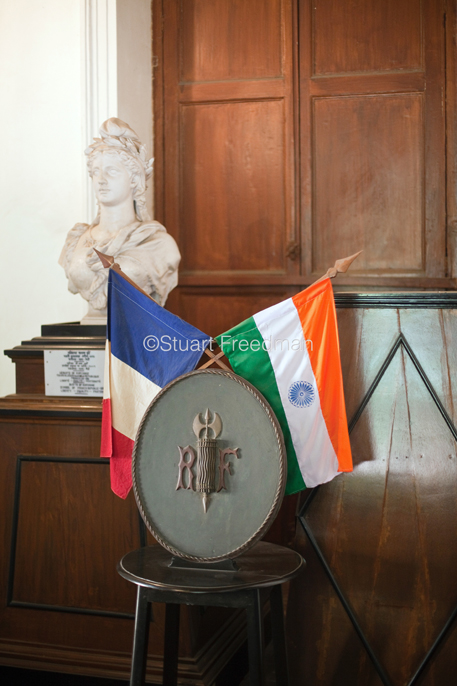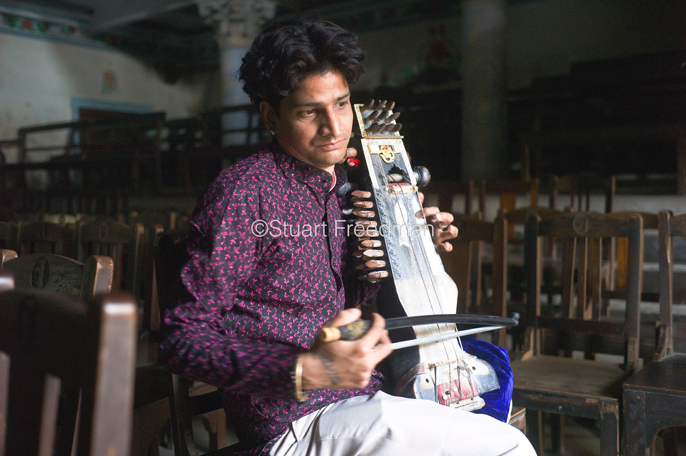In 2013, I made a story about the now sleepy town of Chandannagar on the banks of the Hooghly River near Kolkata.
Chandannagar (or Chandernagore) was first established as a French colony in 1673 when the Nawab of Bengal gave permission to establish a trading mission. By 1730 when Joseph Francois Dupleix was appointed governor, Chandannagar had more than two thousand brick built houses and was the main European entry to the subcontinent. The British East India Company inconveniently flattened a good deal of it during its capture in 1756 but returned it to French rule in 1816. It was governed as part of France until 1950 when the inhabitants voted to join with the newly independent India.
As part of my story, I wandered into the Institut de Chandernagar, now a museum that was the original governor’s palace. Inside, amongst Colonial French artifacts, I found a mystery – and one that I found very moving and upsetting.
Here is what I wrote:
“In another dusty room a harpsichord gently decays, its keys like broken teeth, watched over by a small bust of a stern Napoleon. In a case, the last French flag, dirty and a little tattered. Dupleix’s own bed is enormous but deeply uncomfortable looking. Time has stopped here and moulders in the sticky, wet heat. Perhaps saddest of all, the shattered spectacles of Dr J N Sen MB MRCS Private West Yorkshire Regiment and a son of Chandannagar, killed in action on the night of 22/23rd of May 1916 in France. His, the dubious honour of being the first Bengali to do so. Why he was fighting for a British regiment is a mystery but how sad to die so far from the verdant splendour of the steamy jungle and the smell of jasmine oil in a woman’s hair.”
I had quite forgotten about this until this morning when I heard a short piece on the BBC Radio 4 programme, Today (if you listen it’s at 02:53:51) where Santanu Das (a reader in English at King’s College London) explains why Dr Sen was there. There is also a piece here from BBC Leeds published a few days ago that reports the story.
I remember standing there in the heat of the room feeling so utterly moved by the spectacles that I didn’t take a photograph but just jotted some words down and had to leave.
Here are some images from the story. The last frame shows the talented musician Umesh Mishra, playing his sarangi during a practice session for a concert he was giving that night in the town.
Perhaps that might be a fitting visual requiem for Sen.



